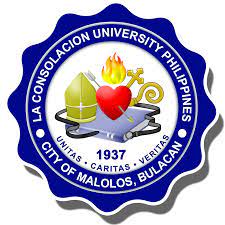Promoting Quality in a Time of Disruption
- December 2, 2020
The Corona Virus Disease of 2019 (COVID 19) hit us around March. It was an invisible invader, but breathtakingly contagious. And lethal. The World Health Organization reports that since its emergence in Wuhan, China, it has infected some 55 million people and killed some 8 million. In the Philippines it has infected some 410,000 and killed 25,000.
In an effort to keep the infections down to numbers that our fragile health system can cope with, the Philippines responded to COVID 19 with advisories relative to hand washing and physical distancing; local and national executive orders were issued imposing different levels of quarantine.
All of them proscribed close-quarter, face-to-face (f2f) gatherings as happen normally in our classrooms. Advisories prescribed online learning or flexible learning.
For many of us, the virus disrupted our teaching – and our lives – mid semester, leaving us with studentries that preferred the cancellation of classes for all rather than the advancement in learning for some.
For others it disrupted the time-tested cycles of f2f teaching, learning, assessment and quality assurance. Disruption and Heroism The situation was daunting, bringing schools with emptied classrooms to their knees. But it failed to kill the Philippine educators’ soul.
Despite the disruption, the desire among our teachers to teach and to teach well remained strong. This was not just a requirement of a job, it was the call of a vocation.
The Philippine educators’ soul was alive not only in the individual teachers. It was also alive in their respective institutions, whose soul was the shared vision and mission of the educational community.
Administrators faced the crisis, perceived the dangers, assessed their resources, and recognized the need for accommodation and change. For many, enrolment was down. Cash flow was precarious. Salaries were endangered. They confronted the risks, but made the decisions to accept or mitigate them, just to continue educating. Where necessary, they found the resources – from banks, from mission funds, from creditors, from benefactors. Drawing strength in the identity of the institution and the urgency of its mission, they found courage to challenge teachers and staffers to sacrifice, to retool, to learn new modes of delivery, just to keep the shared commitment to teach and to teach well alive.
Educators and staffers, drawing strength from the same educators’ soul, obliged. Where f2f instruction was no longer possible, they shifted online, willing life into often ignored IT infrastructure, gamely managing difficulties with internet connectivity and uneven access to gadgets. Where online teaching was not possible, they used modules of selected learning materials supplemented by public television or radio or recorded lessons on YouTube, to keep their students learning and reporting back to them on their progress. In the institutions whose identities and missions mandated it, this went beyond online instruction to continued research and service of the community, often with newfound technical creativity, energy and tenacity.
As this school year slowly unfolds, and the results of courageous efforts of our institutions to keep implementing their educational mission are still outstanding, many new challenges appear, especially the challenge to mental health. Working with the internet, working from home, working apart but coming together online, coming together virtually but not coming together in the warmth of personal relationships, working synchronously and asynchronously at will, i.e., without careful coordination, have placed unexpected strains on our teachers, administrators, staff and students.
The home, yesterday’s haven of rest and of privileged familial communication, has been ruthlessly transformed into a place of work. So where do tired teachers and exhausted students get their rest?
Where online education is supposed to be more student driven, overused compulsory synchronous sessions keep them teacher-driven and hog the discretionary time of the students.
Where asynchronous sessions are supposed to encourage student-driven learning, inappropriately mediated learning material dumps indigestible content on hapless students and creates experiences of frustration, discouragement and depression. Meanwhile, formative exams, simply meant to track learning, create unexpected pressures.
Where in basic education the help of parents is welcome and essential, some parents for all their enthusiasm over-supervise their children, answering the questions of the teachers rather than allowing their children to do this.
As this academic year yet unfolds, we are learning there is great need for educators to closely monitor what is happening in the online instructional process, and if necessary, to intervene with compassion, flexibility, better understanding of the teaching strategy, more pragmatic understanding of the pedagogical tools, innovation and rest. How provide for the mental health of teachers and students while minimum learning outcomes are yet to be achieved and evidenced?
To the challenges of online education, flexible learning and modular delivery, to the challenges of mental health and of counseling services, spiritual care and formation online, then came Typhoons Quinta, Rolly, and Ulysses heartlessly. These brought fierce winds, punishing rains, rushing waters from imperiled dams, and widespread flooding in Luzon.
Serious damage to our schools and power outages further disrupted our operations. In these months of chaos, uncertainty, and the need for survival, the drive to deliver quality education remained and remains alive. Perhaps today as we come together we must celebrate that, quietly recognizing the heroism in it all – the heroism of our efforts powered from deep within our Philippine educators’ soul.
For some it was the call within just to continue teaching, and to continue teaching well. For others it was also the need to respond to the call of a God of compassion, who wills his truth to be known. But ours was a response which we must pause to applaud in recognition of and encouragement of one another.
So today, coming together in this general assembly as PAASCU educators despite the pandemic, let is give each other a round of applause. …. PAASCU’S Response Clearly, with all that you have gone through to keep quality education alive in your schools, you could not be thinking our accreditation processes as usual. PAASCU was aware of the disruption the pandemic was causing in our schools.
It also caused disruption in the operation of PAASCU, in the lives of its officers, administrators and staff. On May 22, the PAASCU Board “resolved that accreditation visits be suspended for one year, from June 1, 2020 to May 31, 2021.” The PAASCU resolution was complemented by a PAASCU-led Board resolution of the Federation of Accrediting Associations (FAAP) on July 7, 2020, that the “accredited status certified by FAAP be extended by one year on top of the grace period provided in the FAAP policy on expiry date.” The resolution would benefit not only the accredited program of PAASCU but also those of PACUCOA and ACSCU-AII.
For the schools dealing with the disruption of the pandemic, the pressure from the normal cycles of accreditation was off. But this did not mean that PAASCU stopped fostering, advancing and advocating “quality education through voluntary accreditation” as PAASCU’s vision and mission require. It did not stop promoting their member institutions’ implementation of quality education.
It did not stop seeking to improve the accreditation process in pursuit of a culture of excellence in education.
As you addressed concerns of survival and emergency educational delivery, PAASCU kept in touch with you through surveys, webinars, and relaxed payment of fees; we believe that meanwhile we became more responsive to your needs.
We attempted to create a community of support among our member schools and volunteer accreditors through frequent meetings. As of today, PAASCU’s eight Commissions have come together through 111 meetings this year in pursuit of improved quality. Through shared challenges and shared burdens, friendships deepened and the quality of our work improved. Much has happened meanwhile. You have been part of it. What is happening is still ongoing. It is a shared work in progress.
But PAASCU’s promotion of quality for its member schools, for itself, and for the nation – despite the pandemic – is very significant. Let me just mention three areas: We are revising the instruments of accreditation to make them more responsive to the realities of the schools and to base them on shared standards of quality.
Work is ongoing today on 14 different instruments. We are revising the accreditation process to accommodate the new instruments and to integrate new technology into the accreditation process.
We are now implementing the use of the 23 Standards of Quality Practices in Institutions that respondents to our survey last August and September overwhelmingly ratified. Standards of Quality Practices: Empowering Institutions to Authentic Quality Assurance In the time that I have left for this address, I would like to focus on the significance of these 23 Standards of Quality Practices.
Three years ago, when we celebrated 60 years of PAASCU accreditation, I said, “Of the many types of possible quality assurance procedures, PAASCU chose the most challenging – accreditation.”
Today, PAASCU continues to choose accreditation. But then I also said, accreditation involves “the school’s evaluative self-survey of programs based on an instrument that carries the standards of the PAASCU accreditation process, including the standards for faculty, instruction, administration, facilities and community involvement.”
Then, and for all the 60 years preceding in PAASCU’s history, the standards of quality practice were never explicit, never transparent. They were there, but only in a manner of shared agreement in praxis.
They were never articulated. They were never owned as standards of quality practice; instead they were insinuated in the instruments PAASCU used without question or challenge as a requirement of accreditation.
As such, they supported a “functional framework” of doing accreditation, taking areas such as administration, faculty, curriculum and instruction, library, laboratories, and student services as functions in and for themselves, abstracted often from the vision and mission of the school, the type of students the school served and the external stakeholders it needed to be sensitive to.
Merely implicit, they could favor and reward institutional inputs without due attention to institutional results. Indeed the insinuated standards were often confounded with “best practices” collected from various schools over years of accreditation, often imposing a practice developed by a wealthy school in its pursuit of quality in an urban setting on a resource-challenged mission school pursuing quality in the service of indigenous peoples.
In this manner, the implicit standards were effectively prescriptive, constraining, not empowering. Moving away from this abstract “functional framework,” PAASCU’s adoption of explicit standards of quality practices makes our accreditation process much more transparent. It challenges those who use these standards to understand them, own them, and to appreciate critically how they impact transformatively on the quality of their school.
It thereby empowers the school to take authentic responsibility for the quality it pursues. Owining the standards it freely uses in its own authentic pursuit of quality, the school recognizes these standards in the revised instruments of PAASCU’s accreditation process. In this manner, PAASCU affirms with the AQAF that “the institution has a primary responsibility for quality” (3.1).
Indeed, “a fundamental principle in quality assurance of higher education is that quality primarily rests with the higher educational institutions themselves” (3). What is asserted by AQAF for higher education may here also be applied to basic education. Even for stand-alone basic education institutions, or for basic education institutions integrated with college or university operations, quality assurance rests with the educational institutions themselves. Our educational institutions promote quality.
Guided by PAASCU’s four-fold definition of quality, they promote quality through “[1]the implementation of their vision, mission and goals, [2] achievement of minimum standards and evidenced [3] excellence through learning outcomes, and [4] responsiveness to stakeholders.” The 23 standards of quality practices further guide the educational institutions in pursuing quality under this definition. You have seen and approved the list of 23 standards divided into eight areas: Leadership and Governance, Quality Assurance, Resource Management, Teaching-Learning, Student-Services, External Relations, Research, and Results. Each of them are overarching and pragmatic statements of principles that guide schools and agencies such as PAASCU to quality assure institutions and the programs they offer.
They are broad and inclusive, especially in emergency times like ours during this pandemic, when schools are adopting various modalities of teaching and learning and finding creative and innovative ways to serve their students and other stakeholders in fulfillment of their unique mission. They were formulated for us by our Commission on Standards led by Sr. Marissa Viri, RVM, but only after benchmarking with the international standards of such as the ASEAN University Network, The ASEAN Quality Assurance Network, The European Network for Quality Assurance for Higher Education, among others.
Pursuing Quality Through the Standards of Quality Practices But let us now view the statements as a further clarification or operationalization of the educational quality we pursue.
In pursuing quality through [1] the implementation of the educational institutions vision mission and goals, we are further guided by the quality practices under:
Leadership and governance Quality Assurance
Resource Management Results: specifically, Finance and Competitiveness Results In pursuing quality through [2] achievement of minimum standards and evidenced [3] excellence through learning outcomes, we are further guided by the quality practices under: Teaching-Learning Research
Student-Services Results: specifically, educational results and research results. In pursuing quality through [4] responsiveness to stakeholders, we are further guided by the quality practices under: External Relations Research Results: specifically, community engagement and service results as well as research results. After our long argument with government criticizing “outcomes-based quality assurance” as in CMO 46 s. 2012 as one-sided, we may appreciate that our quality practices value both inputs and results.
Through our appropriation of the 23 practices, and our discussion of them today, may we discover in them the powerful help they provide in advancing our own internal quality assurance (IQA) – even during this time of pandemic. We need to ask how have we been leading our institution towards the fulfillment of our vision and mission with the limited resources we have; even short of accreditation, how have we been exercising quality assurance exposed to the possibilities and perils of flexible learning?
How have we been handling our online or modular instruction and making sure our students are achieving minimum learning objectives? How have we been supporting our students not only in their academic pursuits, but also with their bouts with isolation, loneliness, frustration, self-alienation and depression? Too often did we hear in the COVID months of sad suicides of isolated students unseen in their depressive silence.
Despite the pandemic, how have we been keeping up with allied schools and organizations in pursuit of our vision and mission and in support of theirs? How have we still managed to impact our communities in researched service, in transformative activities, or in prophecy?
Even during this pandemic, how have we not just survived, postured in stunning activities that put us in the newspapers, but really achieved results that are not just hoped for, but evidenced?
We will emerge stronger. This pandemic has been disruptive, but we will survive it. We will survive it for as long as we draw strength from within by our abiding desire to teach, and to teach well not just as isolated teachers but as quality institutions.
Teaching and teaching well despite this pandemic, we will emerge as institutions more empowered to pursue their mission and vision, their minimum learning outcomes, their outcomes that manifest excellence, and their service of the community through the twenty-three standards of quality practices.
Just as PAASCU will emerge stronger as an external quality assurance agency (EQAA) with new or updated instruments formulated using the twenty-three standards of quality practices.
They will be the core of a new accreditation process (EQA-SP) that will quality assure our programs and institutions. With your unqualified support, PAASCU will survive these disruptive times to thrive in a quality future. That is the imperative of our Philippine educators’ soul.





